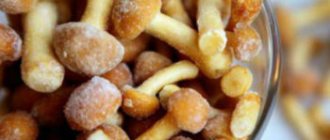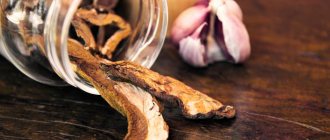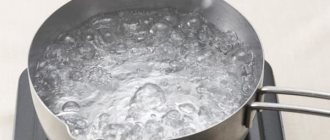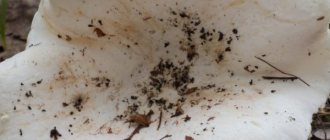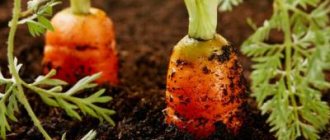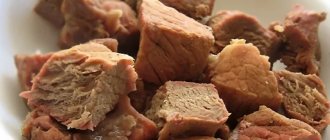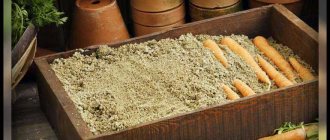Plant protection products
Alternative title:
fusarium wilt, fusarium blight of potato tubers.
The causative agent of dry rot of potatoes:
fungi Fusarium avenaceum (Fr.) Sacc, Fusarium culmorum (WG Sm.) Sacc, Fusarium gibbosum Appel. et Wollenw, Fusarium oxysporum, Fusarium sambucinum, Fusarium solani.
Dry rot of potato tuber
Dry rot of potatoes is caused by the following types of imperfect fungi: Fusarium avenaceum (Fr.) Sacc, Fusarium culmorum (WG Sm.) Sacc, Fusarium gibbosum Appel. et Wollenw, Fusarium oxysporum, Fusarium sambucinum, Fusarium solani. They affect all parts of the plant: leaves, stems, stolons, tubers.
Dry rot is closely related to Fusarium wilt of potatoes. The disease is widespread and ranks second after late blight.
Description of potato rot
Rots can affect different organs of the potato plant and are provoked by various pathogens, which means they will require different treatment and prevention.
We offer you to get acquainted with the description of the most common types of rot. In total there are about 20 of them. Did you know? Potatoes were cultivated 7-9 thousand years ago in the territory that is today Bolivia. Residents of South America, in addition to eating the tubers, also worshiped this plant.
Wet
Wet or soft rot is caused by saprophytic bacteria that penetrate the tubers through damage. The fruits rot while still in the ground, or while already in storage. In the field, wet rot most often occurs during high and prolonged humidity, that is, during frequent rainfall, as well as on heavy soil. In storage - at high temperatures (above +5°C), high humidity, as well as during long-term storage in the temperature range -1°C...+1°C. When affected by wet rot, the tuber becomes soft and produces an unpleasant odor. If you press on it, a yellow-brown liquid is released at the place of pressure. At first, the rot is white, but gradually turns black.
Dry
Dry or brown rot most often affects potatoes. It can ruin up to 40% of the harvest. The fungus that causes it damages the roots and tubers. Infection occurs through plant debris, soil, and infected fruits. The fungus enters through damage caused by late blight or harmful insect activity. The fungus attacks the plant at any stage. The first symptoms become noticeable even during the release of flowers - the leaves of the upper tier on the bushes lighten and fade. Subsequently, symptoms appear on the stem - its lower part becomes brown and covered with a pinkish or orange coating. Depressed gray spots form on the tubers. When cut, you can find voids with white mycelium inside.
Did you know? In the Inca calendar, daytime was measured by the time period during which potatoes were cooked (about 60 minutes).
Fomoznaya
This type of disease develops if the plant was cool and had a lot of rain during the period of growth and growth of green mass. When infected, depressed round spots begin to appear on the fruit, reaching 2–5 cm in diameter. The peel remains intact, but the insides of the tuber can almost completely rot. Also, brown spots can sometimes form on the lower part of the stem of a diseased plant, and the tops can rot.
Ring
The bacteria that cause this type of potato rot affect only those tubers that begin to develop or are placed in storage. The development of the disease is provoked by damage during harvesting or when attacked by harmful insects. Once damaged, the entire potato rots, leaving only a white, foul-smelling mass.
Rubber
This variety received this name because when infected, spots appear on the fruits, the tissue under which resembles rubber. When cut, the tuber emits the smell of rotten fish. The disease can also affect the tops. Most often it develops at temperatures above +25°C.
How to deal with fusarium
Pathogens live in various types of soil. Most often, they manifest themselves only under favorable conditions. Most of all they love soil that is rich in nitrogen and well fertilized with manure. Therefore, it is not recommended to apply organic fertilizers frequently to avoid problems.
Spores, which constantly sleep in the soil, begin to penetrate into the potatoes through wounds and cracks under favorable conditions. As a result, the disease begins to develop rapidly, gradually affecting the roots, leaves and stems. After flowering begins, Fusarium wilt can be observed in plants.
The leaves at the tips gradually lighten, whitish spots appear, and as a result, the stems are gradually affected. The outer part of the plant becomes covered with a pink coating, and then the inner part is affected. It can be noticed when cut, it changes color in the first stages of development. After this, the growth of the potato becomes slower, and eventually it withers.
Dry rot does not necessarily spread during the initial stages of potato development. Every experienced gardener can dig up a fairly healthy potato and leave it for storage. After a few months, the tubers become covered with small brown spots, then they increase in size and disappear. Subsequently, it becomes like a light but hard ball.
Unfortunately, the disease has no cure. You can take preventive measures to stop the spread, but those tubers that are already affected will gradually deteriorate. In addition to all this, the infection also brings with it other fungi, which deprive the gardener of a large share of the harvest.
If the disease is already present in the soil, then it requires careful treatment. You can plant green manure in the required place, as they perfectly nourish and cleanse the soil. It is advisable to treat it with the drug phytosporin.
Read also: Evergreen tree with spicy fruits
It is recommended to abandon organic fertilizers, or reduce the amount of application. It is not advisable to introduce fresh cow dung.
Signs of illness
The disease on potatoes can be identified by the following signs:
- change in leaf color from green to pale;
- the color of the stem becomes pink;
- the growth and development of the bush is suspended;
- leaves and tops wilt;
- During winter storage, brown spots form on potatoes.
An infected tuber becomes like a hard ball, it is light, with voids and white fungus inside.
Ways to combat fusarium
In former times, only thorough treatment with copper sulfate could stop the spread of gray rot. However, the modern chemical industry is producing more and more drugs to combat various potato diseases, including gray rot. They can be divided into biological and chemical.
Baktofit
This biological product is created on the basis of microorganisms that can suppress the growth of all fungal diseases of potatoes. It is available in the form of a suspension or powder. To prepare a working solution, dilute 1 gram of powder per liter of water.
Fitosporin-M
This product is more used as a prevention and control of all fungal and bacterial diseases of potatoes. It is used to treat the seed before planting in the following dosage: 3 tbsp. spoons per glass of water. All tubers are washed with the resulting solution before planting. After the tops appear, they are also treated with this drug at the rate of 10 grams per 5 liters of water.
Integral
A domestic product based on microbiological material. This drug not only suppresses the growth and development of pathogenic microorganisms, but also disinfects seed material, and also protects seedlings, stimulates the acceleration of their growth, and increases the productivity of young plants.
All these drugs are considered biological, so they do not harm either people or animals. But if they don’t help, you should use chemicals.
Titus
This is a herbicide for killing weeds, but it also perfectly disinfects potato plants from various diseases. Harmful fungi and bacteria die along with the weeds. You just need to use it carefully: one gram diluted in 6 liters of water is enough for two hundred square meters of potato field.
Maksim
A domestically produced fungicide is used both for processing planting material and for preparing potato tubers for storage. For this purpose, the drug is diluted at the rate of 8 ml per 4 liters of water. 3 kg of potatoes are disinfected in 1 liter of the resulting solution.
Colfugo is super
Appearing quite recently, this drug affects the division of fungal cells, but mutation does not occur and resistant forms of the fungus do not appear. To achieve the effect, it is enough to spray the above-ground part of potatoes (as well as eggplants and tomatoes) with a solution of 2 g per liter of water. This product is non-toxic to humans, animals and bees.
Causes and source of infection
As can be seen from the description of rot, the main reasons for their development are:
- poor-quality soil tillage before planting;
- prolonged precipitation;
- improper care (overfeeding with nitrogen, waterlogging);
- untimely treatment of diseases and pests;
- mechanical damage to tubers during harvesting;
- damage to the skin of the fruit by harmful insects, for example, wireworms;
- storage under conditions that do not meet the requirements (most often at warm temperatures combined with high humidity);
- storing the crop in bulk when the fruits warm up to +50°C;
- storing crops in stuffy conditions, in the absence of ventilation, poor ventilation and poor access to oxygen.
The source of infection is diseased tubers, soil, and plant residues. It is in them that pathogens - fungi and bacteria - settle. Their development is provoked by favorable conditions (high or low temperatures, high humidity, stagnant air, dense soil). They penetrate plant organs damaged mechanically or otherwise and begin their harmful activities.
Important! Potatoes that have been stored at 0°C for a long time must be used for their intended purpose as soon as possible. It is no longer suitable for long-term storage.
Prevention
If you plant potatoes collected from an infected area next year, a new round of the disease cannot be avoided.
Preventive measures are as follows.
Read also: Varieties of hippeastrum photo catalog
Maintain potato crop rotation, especially if there have already been signs of this disease. It is advisable not to plant potatoes in this place for five years. Disinfect the soil by planting green manure.
Experienced gardeners recommend treating potatoes before planting with antibacterial drugs: Fitosporin, Baktofit. It is useful to treat the planting material with solutions of copper sulfate, boric acid, and manganese before planting. In addition to disinfection, copper accelerates the formation of tubers, increases resistance to disease, boron improves taste, manganese accumulates starch and vitamin C in tubers.
In the spring, the storage must be disinfected, ventilated, and dried. Before storing potatoes for winter storage, they are treated with the drug “Maxim”.
- plant potato varieties that are resistant to fungal diseases;
- avoid excess organic fertilizers containing nitrogen;
- Weed the beds in time to remove weeds, loosen the soil, this will prevent the soil from being too moist, especially in rainy summers.
The causes and treatment of potato fusarium are also discussed in this video, watch it.
Dear readers! Thank you for stopping by to visit me! I would be glad if you share in the comments your experience of growing vegetables, methods of combating plant diseases and pests. If you liked the article, share this information with your friends. Please click on the social buttons. networks that are located to the left of the article. I will be very grateful to you.
I really hope that we will communicate with you for a long time, there will be many more interesting articles on the blog. To avoid missing them, subscribe to blog news. Have a good harvest!
Fusarium, or dry rot on potatoes, is the most common and dangerous disease. This disease is caused by fungal infections. If their spread is not prevented in time, more than half of the harvest can be lost.
Most gardeners believe that this happens due to improper storage of the crop. But experts say: during storage, only a few percent are allowed to become ill. If we consider the statistics, then most often the infection occurs in young potatoes that are just planted in the soil, and much less often during storage.
The disease is very dangerous due to its easy transmission with soil, and it can also remain on potatoes. As a result, healthy potatoes also become sick.
Dry, wet and other potato rots - methods of control
Wet rot is caused by a number of bacteria that penetrate the tubers due to mechanical and fungal irritation of external tissues. This disease begins to develop on tubers even before or during harvest, but it develops most during storage. If stored improperly, bacteria quickly spread to healthy tubers. Thus, you can lose a significant part of the harvest. In this case, all healthy potatoes will be wet and covered with the remains of infected potatoes. Therefore, it is very important to know how to properly deal with wet rot of potatoes.
How is fusarium transmitted?
The pathogen Fusarium oxysporum spreads very quickly and this is its danger. Fungal spores may initially enter the plant through wind or manure. The reasons for the development may be the following:
- Excessive manure content in the soil where potatoes grow;
- Inadequate care of the plantation - the beds are not weeded, the soil is not loosened;
- Waterlogged soil in hot weather promotes the proliferation of fungal spores;
- Mechanical damage to tubers by wireworms, mole crickets, nematodes, as well as during harvesting (cuts, incisions, etc.).
Once on one plant, the pathogen quickly spreads to nearby bushes. Not only potatoes are affected, but also other garden crops (tomatoes, peppers, strawberries, etc.)
From the soil, the pathogen enters the tubers through wounds and cracks. After harvesting, during transportation, fungal spores along with soil residues are transferred to storage. There, fungi continue to multiply intensively throughout the winter storage period. One undetected diseased tuber can infect nearby potatoes.
Video
In this video you will be told about potato diseases and methods of combating them.
It is possible to cure potatoes from rot, but this is a long process with the use of quarantine measures. It is possible that if the infection spreads widely, you will have to completely change the seeds for planting and the site. It is also necessary to follow cultivation technology and crop rotation rules, which significantly increases plant immunity. For long-term storage, ensure appropriate temperature conditions.
Source
Preventive measures
- With proper crop rotation, all infections are often eliminated.
- Do not apply large amounts of fertilizer to the soil.
- Tops and weeds should be removed from garden areas to avoid re-infestation.
- Before planting tubers, they should be treated.
- It is advisable to choose varieties that are more resistant to infections.
If it was noticed that potatoes picked up an infection during storage, then several months before placing a new crop there, they should be treated with fungicides. This should be done in advance so that the product does not get on the crop.
After digging up the crop, it is recommended to dry it well and sort it out. To prevent the infection from developing, it is advisable to sprinkle the potatoes with ash. This will help to store well, and the infection will stop multiplying and affecting other tubers.
Symptoms of the disease
Visually, symptoms of dry rot are detected on potato tubers 2–3 months after storage.
Initially, from the stolon side, slightly depressed, grayish-brown spots appear on the tuber. The pulp under the spots is dry and rotten. The skin of the tuber in the affected areas wrinkles and acquires characteristic folding. Over time, rot covers the entire tuber. At the same time, it shrinks and becomes hard and light. On the surface of diseased tubers, conidial fungal sporulation pads form. Depending on the Fusarium species they are yellow, white or pink.
Recently, the occurrence of dry rot of potatoes has been closely associated with the development of Fusarium wilt of potatoes in potato fields during the growing season.
